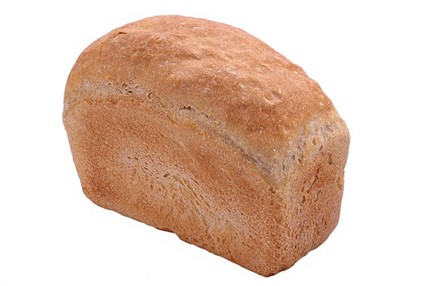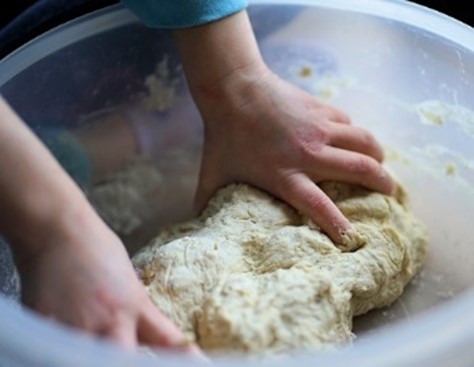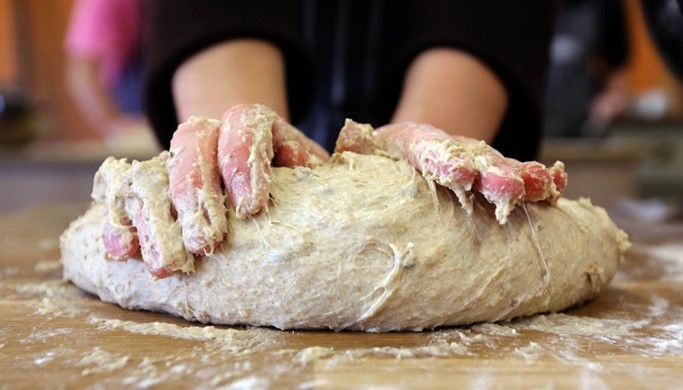Who Will Help Me Make Bread?
By Carla Farrand, Family and Consumer Science Agent, Garfield County
Nothing smells better than freshly baked bread hot from the oven. It gives us the feeling of comfort and love. Making bread is a fun and educational activity to do as a family. Here are a few quick tips to help you have a successful and fun time
baking bread.
Adjusting for Elevation
Making breads can sometimes seem tricky; however, if you practice and adjust for the elevation where you live, this can be a fun family bonding time.
1) Decrease the amount of flour in the recipe. You may need to use up to ¼ less flour than the recipe says. There is enough flour when the dough pulls away from the sides of the bowl. After kneading, it should be soft but not sticky.
2) Increase the amount of liquid in the recipe. This is important if you are substituting part of the flour with whole wheat, rye, or other flours. Add 1 tablespoon or more liquid (water or milk) than in the recipe. Coarse flours need more moisture than basic flour.
3) Reduce the yeast by 1/8 teaspoon. Reducing the yeast helps with providing a firmer bread dough that does not collapse after rising and baking.
4) Control the rising time. Good tasting bread depends on a long, slow rising process. Bread rises quickly at high elevations. There are two ways to slow the rising time for better flavor. First, make your bread dough the day before and allow to rise slowly in the refrigerator overnight. Second, punch the dough down and allow it to rise a second time before shaping.
5) Adjust the oven temperature for baking. Decrease the oven temperature by 1° for every 500 feet above sea level. Baking at a higher temperature will set the crust too quickly, and will not allow the dough to continue rising as it cooks.
Food Safety Tips Before You Begin:
- Tie back long hair
- Wash hands with warm water and soap
- Clean baking and preparation surfaces with warm soapy water, then rinse
- Put on a clean apron
- Read the recipe and gather all the ingredients and tools
- Re-wash hands before beginning to prepare the recipe
- Never taste raw dough, flour is a raw ingredient and should never be eaten without being cooked first
Let’s Talk
There is a great book that was my favorite as a child called “The Little Red Hen”. This book helps explain the process of making bread from the farm to the table. Here is a link to one of my favorite teachers reading this book in both English and Spanish: https://youtu.be/Lik-0Zz5B2c.
There is a lot of science that goes into baking bread. Proofing is the process of making sure that the yeast is active and ready to grow, to create the gases needed for the bread to rise. Kneading is the process of developing the gluten to create the elastic surface to hold the gases developed by the yeast.
Recipes for Health
Basic Bread Recipe
- 1 package yeast (2 ¼ teaspoons, avoid rapid rise yeast)
- 1 ¼ cups warm water (110° F)
- 1 tablespoon sugar
- 1 teaspoon salt
- 1 tablespoon oil (such as olive or canola oil)
- 3 to 4 cups of all-purpose or bread flour
In a large bowl, add warm water, and sprinkle yeast over the water. Stir in the sugar and allow to sit for 2 to 5 minutes for proofing. Then add salt and oil and stir slightly. Start by adding 1 cup of flour to the mixture and stir until smooth. Then add flour 1/2 cup at a time until the dough is soft, pulled together in a ball and is stiff enough to handle. Turn the dough out onto a lightly floured surface and knead until the dough is smooth, elastic and does not stick to the surface or hands, about 5 to 10 minutes. Lightly coat a mixing bowl with oil or nonstick cooking spray. Place dough in bowl, top side down first (to lightly coat with oil), then turn dough over. Cover bowl with plastic wrap and let dough rise until double in size, either on the counter or in the refrigerator overnight. Lightly coat a 9” x 5” bread pan with a nonstick cooking spray. Punch down the dough, turn it out onto a floured surface and shape into a loaf of bread. Place dough in the bread pan. Cover and let rise until double in size. Bake at 375°F (350° F for a dark pan) for 30 to 40 minutes. Bread is done when internal temperature reaches at least 190oF. Crust should be golden-brown. Cool bread in pan for about 5 minutes; then remove from pan and cool to room temperature on a cooling rack.

“Now, who will help me eat the bread?”







